The McDonald Observatory in Texas offers astronomers and curious visitors some of the darkest night skies in the continental United States.
Here, professional astronomers use one of the world's largest optical telescopes, the Hobby-Eberly Telescope, for astronomical research on dark energy, faraway galaxies, and planets orbiting distant stars.
The observatory is a research unit of the University of Texas at Austin and is open to the public.

Table of Contents
Planning Our Visit
When I suggested to Kel that we plan a trip to Marfa and Big Bend National Park, she excitedly brought up McDonald Observatory, located 38 miles north of Marfa in the Davis Mountains of West Texas.
The observatory is known for its star parties ($25), including a lecture in an outdoor amphitheater and easy access to the Rebecca Gale Telescope Park located next to the Visitors Center.
Star parties are held three times a week on Tuesdays, Thursdays, and Saturdays. Unfortunately, they were fully booked for the weeks we were considering.
However, there's more to visiting McDonald Observatory than their evening programs and star parties.
The observatory also offers guided tours ($10), self-guided tours ($3), and solar viewings ($5).
Guided tours were also sold out on the day we planned to go; however, we both enjoyed the self-guided tour and live look at the sun.
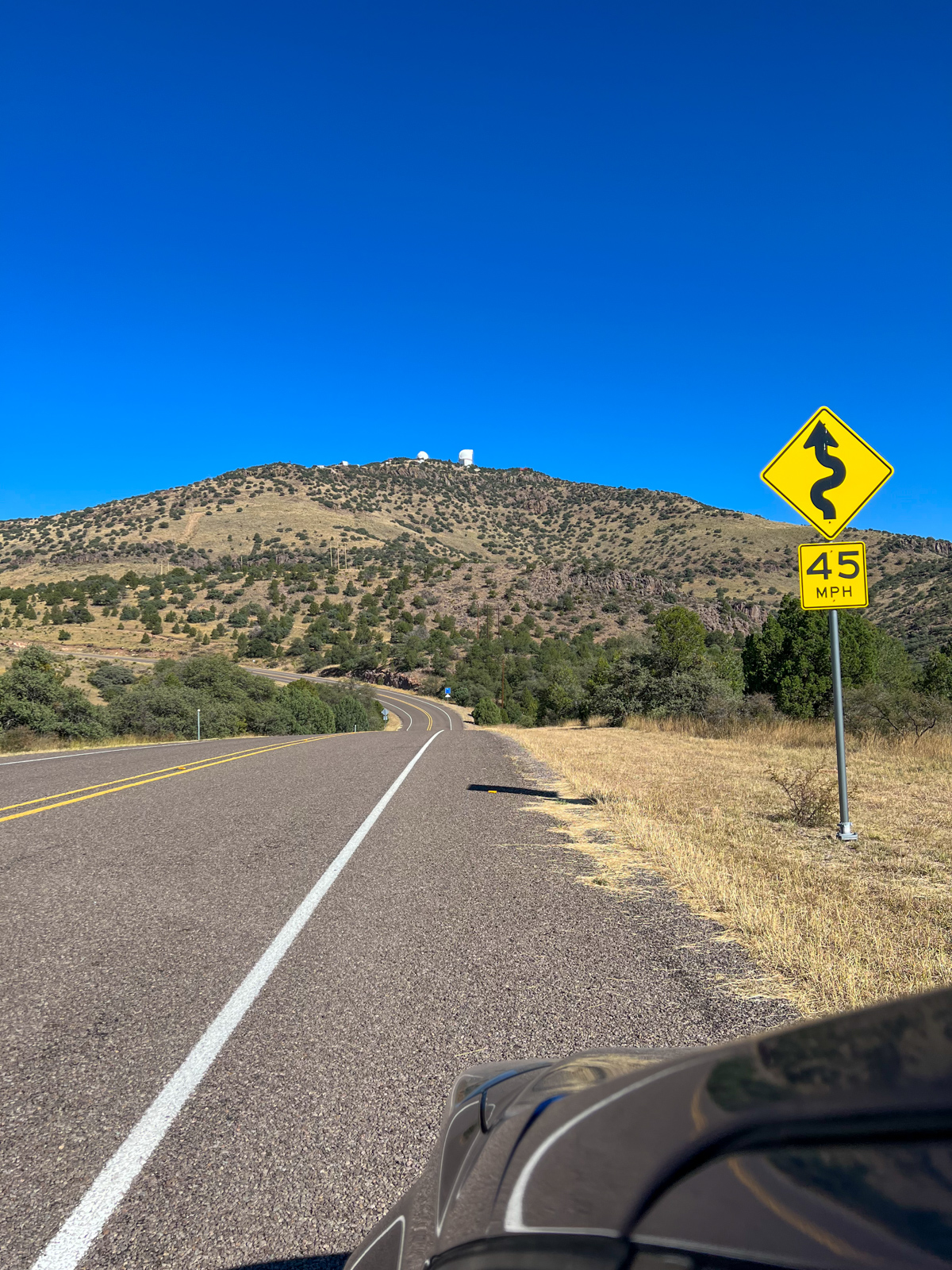
Getting to McDonald Observatory
McDonald Observatory is about 440 miles west of Austin, Texas. The drive takes about seven hours, so you'll want to spend a few nights out there unless you're en route somewhere else.
We stayed in Marfa for two nights, 38 miles south of the observatory, or about a 45-minute drive (via TX-17 North and TX-118 North to Dark Sky Drive).
If you prefer to sleep even closer, hotels and RV parks are available in Fort Davis, about 17 miles southeast of the observatory.
The highways are all nicely paved. TX-118 North features twists and turns that may provoke motion sickness in some. It doesn't last too long, though.
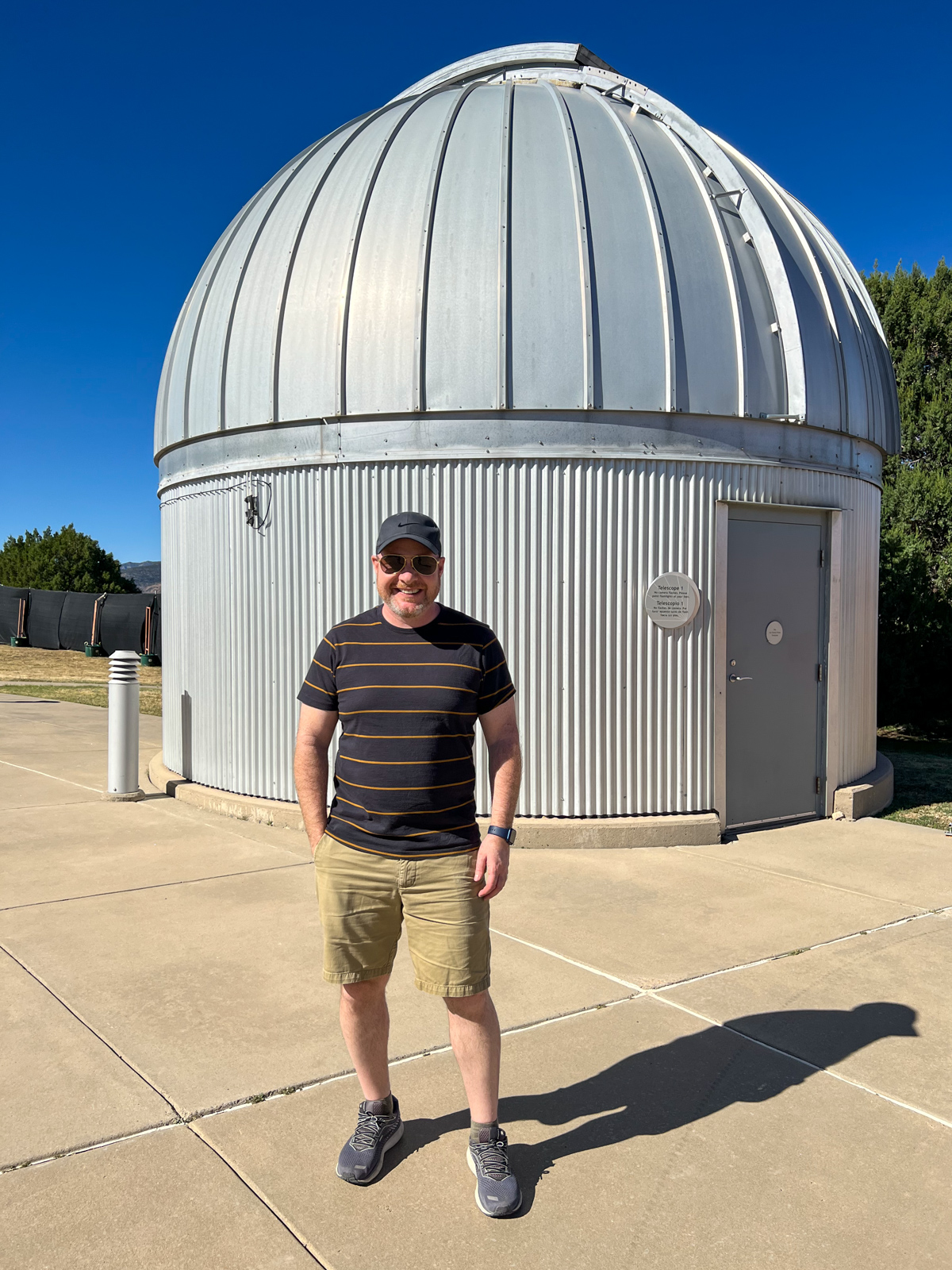
Self-Guided Tour
The entrance to the Visitor Center features a sundial and a clear view of the Hobby-Eberly Telescope perched atop Mt. Fowlkes.
Upon arrival at noon, we checked in and were given a map of the facility for our self-guided tour and a sticker to indicate we were attending the 1 p.m. sun lecture and solar viewing.
One hour was just enough time to explore the grounds ahead of the lecture.
We got back in our car after taking a few photos around the Rebecca Gale Telescope Park, where astronomy buffs can look through small telescopes during the star parties.
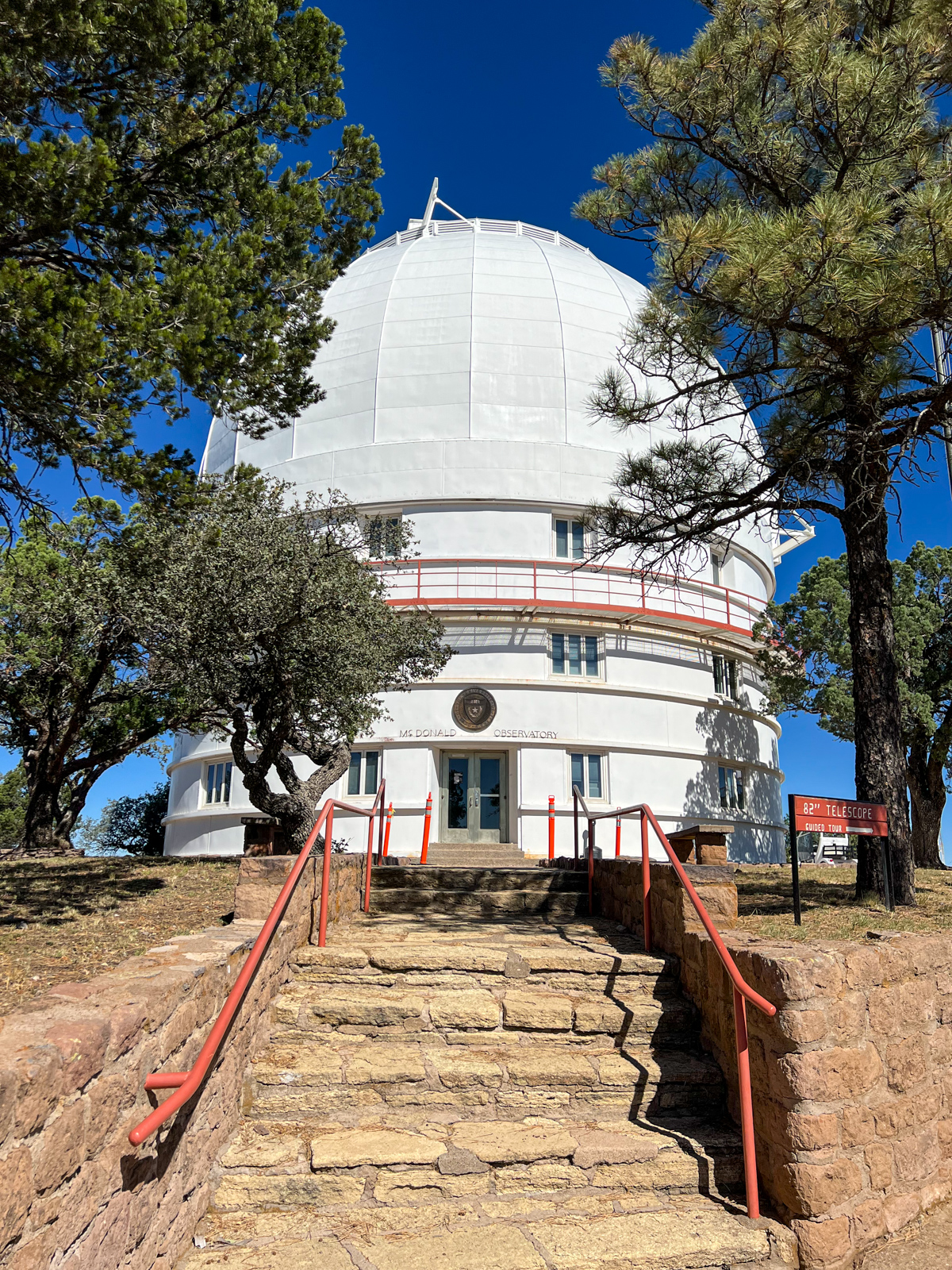
Otto Struve Telescope
Keeping the time in mind, we drove to Mount Locke, home to the first telescope built at the McDonald Observatory in Texas.
The 82-inch Otto Struve Telescope was completed in 1939 and was the world's second-largest telescope.
Thanks to good maintenance and regular upgrades, this big telescope continues to be used for astronomical observations of the universe more than 80 years later.
According to the official website, this telescope “made some important discoveries, including the discovery of Uranus' fifth moon Miranda and Neptune's moon second-largest moon, Nereid. It was used to discover carbon dioxide in the atmosphere of Mars and methane in the atmosphere of Saturn's giant moon Titan.”
A historical plaque outside the observatory says this site was chosen for its:
- High ratio of clear nights
- 6,800-foot altitude
- Distance from cities and artificial light
- Low latitude (which helps with observations of the southern skies)
This building is not accessible, regardless of whether you're on a self-guided or guided tour.
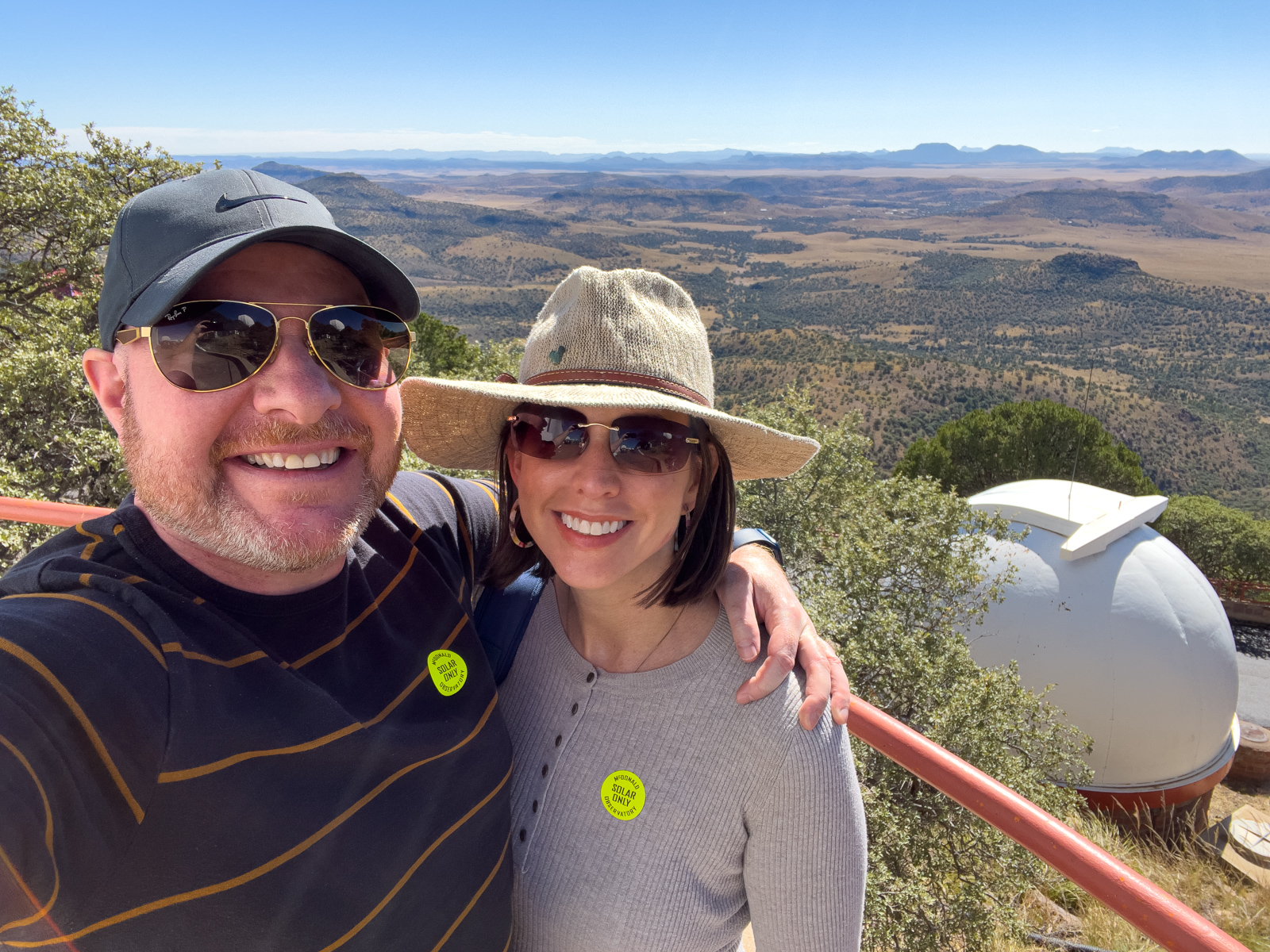
Harlan J. Smith Telescope
Mount Locke is also home to the 107-inch Harlan J. Smith Telescope, completed in 1968. At the time, the 160-ton telescope was the third-largest in the world.
This telescope was initially used to study the planets in our solar system, so NASA better understood them before designing new missions.
“For almost a decade, the telescope also reflected a laser off mirrors left on the Moon by Apollo astronauts, in a program called “lunar laser ranging.” These results have helped refine the distance to the Moon and enabled a better understanding of its interior, and provided a test of Albert Einstein's theory of General Relativity.”
– Official Website
It's possible to enter the lobby of this telescope on an unguided tour, but there's nothing more than a short video. Additional access is provided on a guided tour.

Scenic Views from Mount Locke
The views from Mount Locke are expansive. A sign states that the summit of Mount Locke is the highest point on Texas highways (6,791 feet).
Kel captured a terrific shot of the Hobby-Eberly Telescope on Mount Fowlkes from our vantage point on Mount Locke.
Related: Griffith Observatory in Los Angeles

Hobby-Eberly Telescope
The 433-inch Hobby Eberly Telescope (HET) was completed in 1996 and upgraded in 2016.
It's one of the world's largest optical telescopes, designed to study the light emitted from far-off galaxies and stars.
Unlike the other large telescopes at McDonald Observatory in Texas, an exhibit shines a light on the research conducted with the HET.
The Hobby-Eberly Telescope Dark Energy Experiment (HETDEX) aims to “make a three-dimensional map of the universe when it was about three billion years old and measure its expansion rate at that time.”
To do this, HETDEX is mapping one million galaxies and measuring how fast they're moving away from us.
The numbers are truly astronomical. Our galaxy, the Milky Way, contains 100 thousand million stars.


I loved that a window allowed visitors to see directly into the HET.
The HET's mirror is always tilted at 55 degrees above the horizon. However, the tracker mounted above the telescope moves in six directions, allowing the HET to study 70 percent of the visible sky. The 80-ton telescope rotates on a bed of air, using air cushions to lift and position the enormous instrument.
– Official website
Scenic Views from Mount Folkes
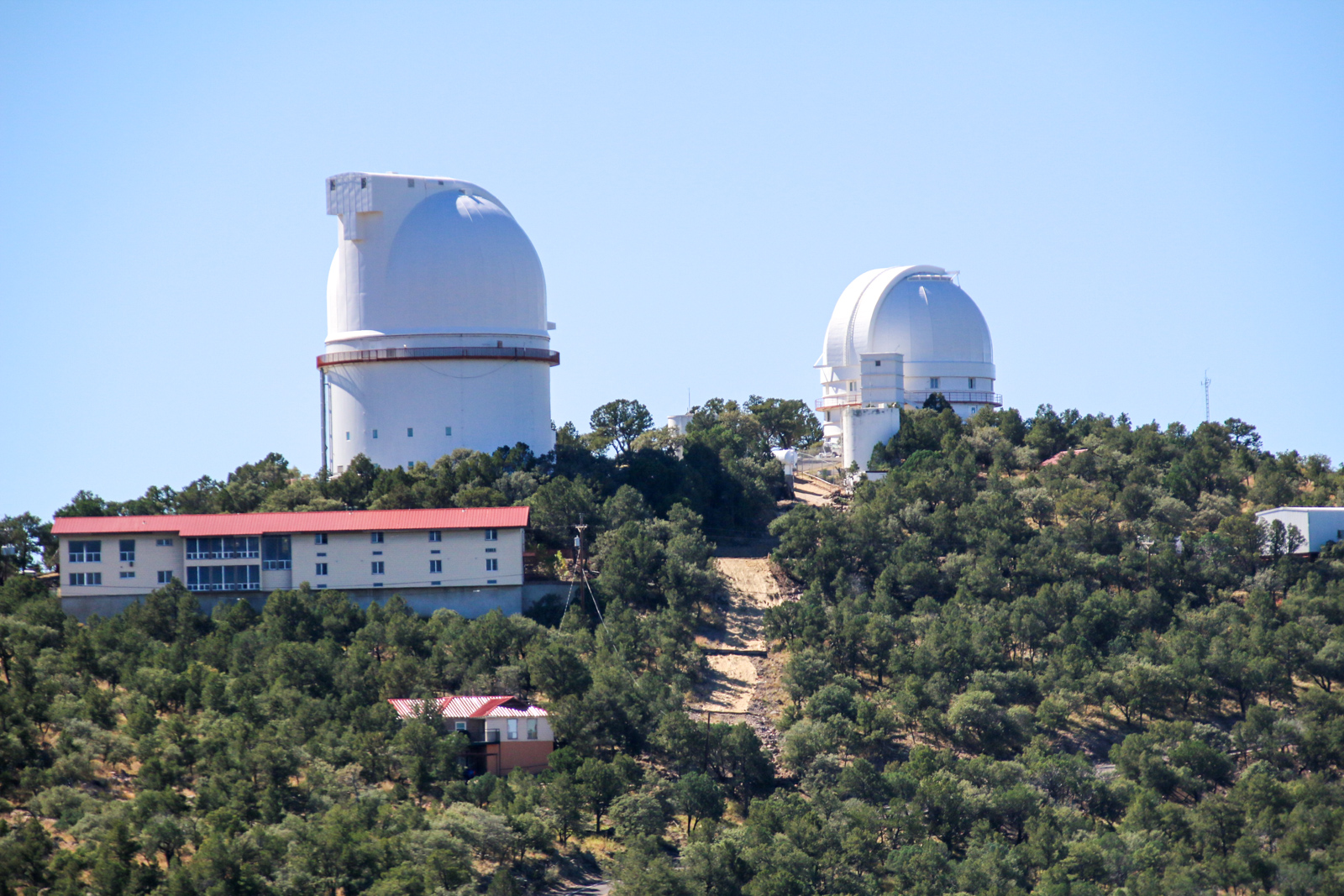
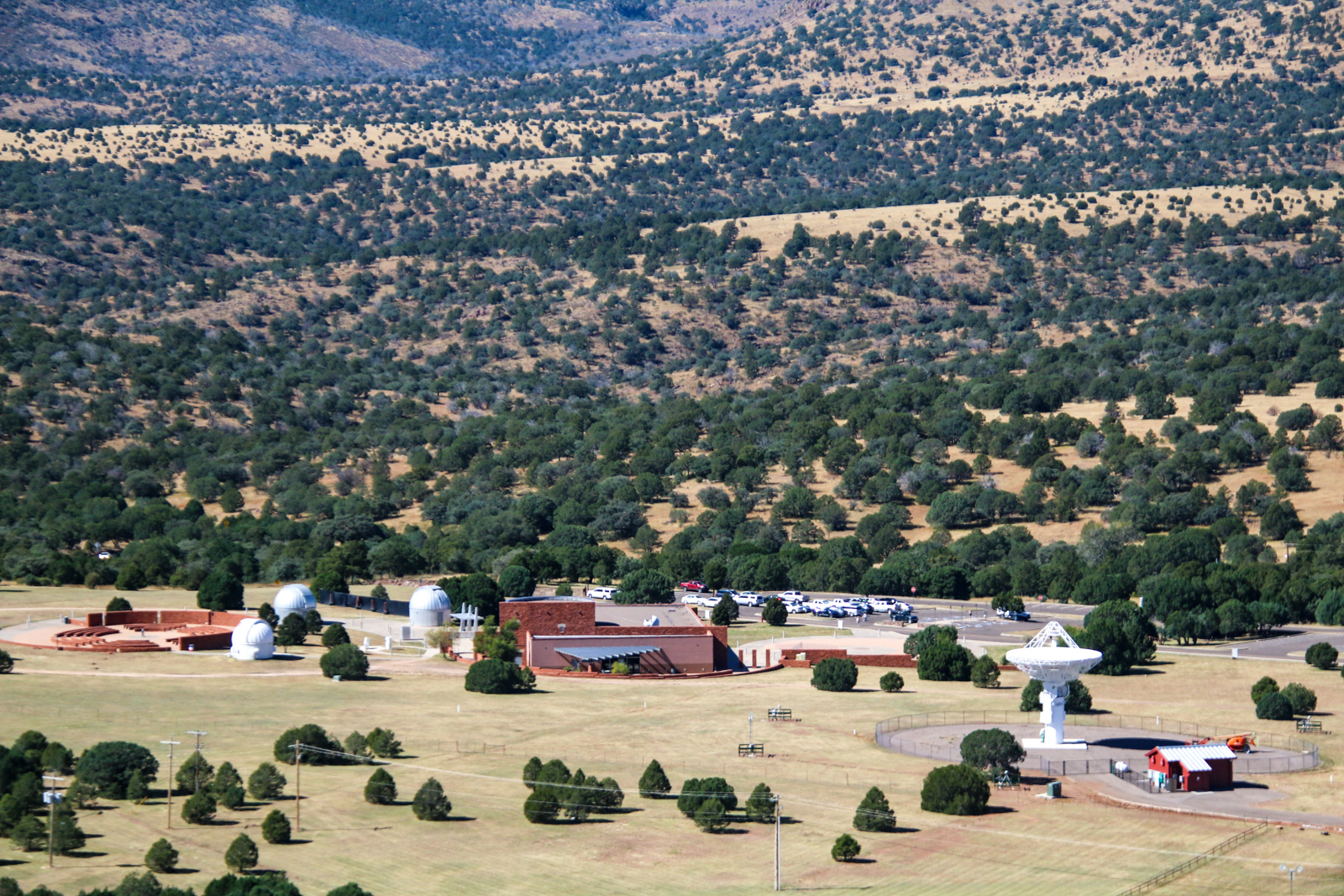
The view from Mount Fowlkes offered an excellent vantage for pictures of the other two giant telescopes we'd just visited on Mount Locke.
Plus, you could get a better feel for how the Visitor Center and public telescope park appear amid the natural landscape.
Related: Kennedy Space Center Attractions

Frank N. Bash Visitors Center
It took us about 45 minutes to do the driving portion of the self-guided tour. Afterward, we parked the car at the Visitors Center.
Our remaining 15 minutes before the solar viewing was spent at a small exhibit about the history of McDonald Observatory and the gift shop.
Solar Viewing
At 1 p.m., the doors to the lecture hall opened, and we took our seats in the center of the room.
One of the guides gave us a 45-minute lecture on the sun, the closest star to Earth we can study.
He threw in a little self-deprecating humor, knowing we were all more interested in the live images of the sun's surface than hearing him talk.
However, the info he relayed did help us to appreciate better what we were seeing on the screen once the special telescope used to study the sun was pointed at it. It was a little underwhelming but still neat.
Upon returning home to Austin, I watched a new episode of NOVA on PBS about the age of stars and their life and death cycles.
It has incredible video images of our sun's surface, including solar flares. The episode is available to watch online at PBS.

Visiting McDonald Observatory in West Texas
While I would've loved seeing the night sky at a star party, given how far we had to drive in the Lone Star State to reach the McDonald Observatory, I still felt like our daytime visit was worthwhile.
If you're planning a trip to the region, whether to visit Marfa or Big Bend National Park, I highly recommend finding the time to see McDonald Observatory.
You can check the availability for guided tours, star parties, and solar viewing programs and pay for tickets on the facility's website.
To protect the night skies in the Big Bend region from light pollution, the observatory is applying to the International Dark-Sky Association to create an International Dark Sky Reserve in the Big Bend region.
Dave is the Founder and Editor in Chief of Go Backpacking and Feastio. He's been to 66 countries and lived in Colombia and Peru. Read the full story of how he became a travel blogger.
Planning a trip? Go Backpacking recommends:
- G Adventures for small group tours.
- Hostelworld for booking hostels.
